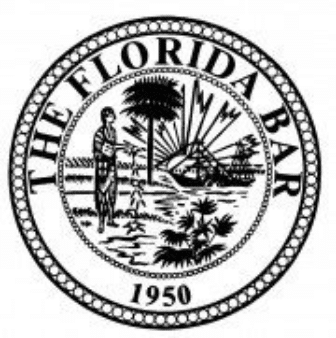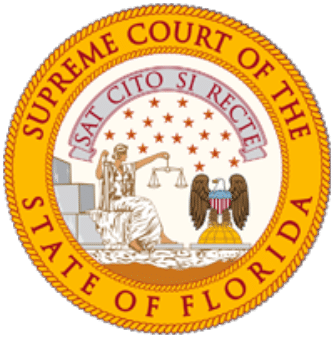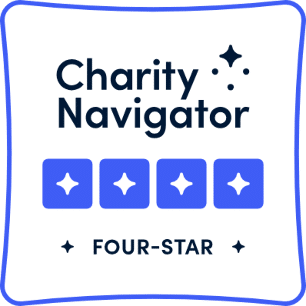 A single mother waiting tables in Daytona Beach, Michelle Gonska rarely saw two days go by without getting a call from her first-grader’s school about his behavior.
A single mother waiting tables in Daytona Beach, Michelle Gonska rarely saw two days go by without getting a call from her first-grader’s school about his behavior.
“I was trying to work, and the school was calling me every other day because they could not handle him,” she said. “I was losing so much time from work because I would have to go either intervene or mostly take him home.”
Gonska’s son Austin had been diagnosed with Asperger’s, attention deficit disorder, and oppositional defiant disorder and identified by the school district as having an emotional and behavioral disorder (EBD). Administrators had shuffled Austin around to three different schools but had failed to provide the evaluations and services to which the law entitled him. Instead of having the school system’s experts address his behavioral and academic needs, school personnel were relying on his mother to be on call whenever they were unable to redirect his behaviors.
As a result, Gonska paid a heavy toll both emotionally and through lost wages.
“My employer was very understanding, but not FP&L,” Gonska said in reference to her struggle to pay utility bills.
Worse still, Austin was not learning as he should have been.
Fortunately for both of them, a friend referred Gonska to Community Legal Services of Mid-Florida, where attorney Valerie Dominique represents children with support from a Children’s Legal Services grant from The Florida Bar Foundation.
At that point, Gonksa had already done all she could to get the schools to act.
“I had done so much to get my son the best services I could,” Gonska said. “It was always just a piece of paper on someone’s desk. And I said, ‘It may be just a piece of paper to you, but that’s my son.’ Valerie was my voice.”
Dominique knew that based on Austin’s behaviors and language difficulties, the schools should have completed updated comprehensive psychoeducational, occupational therapy, and speech and language evaluations, as well as a functional behavior assessment. She stepped in to make sure all the assessments were conducted so that Austin could be provided the appropriate supports and services to give him the best chance to succeed academically and behaviorally. Through this testing, Austin was identified as also having a language impairment that contributed to his academic and behavioral issues.
 With Dominique’s continued involvement, school staff revised Austin’s Individualized Education Plan and Behavior Intervention Plan. A behavior tutor was provided to help Austin learn appropriate positive behaviors. Austin spent a few unsuccessful months in a general education classroom and then an exceptional student education (ESE) classroom, until staff determined that he would do better in a smaller class setting for children with emotional and behavioral disorders. He also began receiving language therapy twice a week.
With Dominique’s continued involvement, school staff revised Austin’s Individualized Education Plan and Behavior Intervention Plan. A behavior tutor was provided to help Austin learn appropriate positive behaviors. Austin spent a few unsuccessful months in a general education classroom and then an exceptional student education (ESE) classroom, until staff determined that he would do better in a smaller class setting for children with emotional and behavioral disorders. He also began receiving language therapy twice a week.
In a second-grade class with just four students, where the teacher and paraprofessional had special training for working with kids with emotional and behavioral issues, Austin fared much better. The teacher and behavior analyst worked with him on his social skills through role playing and other techniques and taught him how to interact better with his peers and with adults. Dominique arranged for him to help some of the school personnel one-on-one with small tasks, something he considered a reward for good behavior. Now in third grade, Austin has shown enough progress to be placed in ESE classes, outside of the EBD classroom, where he gets to interact with a larger group of kids while learning social studies and science.
Gonska said Austin still has good days and bad days, but overall he is doing much better.
“I can’t give enough thank-you’s, enough anything to the staff and teachers,” Gonska said of the personnel at Austin’s two most recent schools.
“Valerie brought me this far,” she added. “I wanted to give up. I couldn’t have done it without her.”
Gonska fears that school budget cuts end up driving more teachers into positions for which they don’t have the proper training and would like to see more efforts to raise parents’ awareness of services such as legal aid.
Meanwhile, Dominique is busy crisscrossing more than a half dozen Central Florida counties trying to keep up with the demand for her services. Community Legal Services of Mid-Florida, which serves 12 counties in all, used to have five full-time attorneys in its Child Advocacy Project. Florida Bar Foundation funding for the project has decreased due to the impact of low interest rates on revenue from Florida’s Interest on Trust Accounts Program. The Foundation’s 2011-12 grant for the Child Advocacy Project was $113,381, down from $175,100 in 2008-09.
Having also suffered cuts from its other funding sources, Community Legal Services of Mid-Florida has lost attorney positions. Dominique is now the only full-time children’s attorney, although there are still two part-time attorneys. Often the Children’s Advocacy Project has to turn clients away.
“We prioritize for emergencies and whatever cases we feel require full representation. We provide limited representation and advice to other clients we are unfortunately not able to represent,” Dominique said.
The project at Community Legal Services of Mid-Florida is one of 23 Foundation-funded Children’s Legal Services projects around Florida suffering similar cutbacks.
Eugene K. Pettis, president-elect of The Florida Bar, urged Bar members to be part of the solution by contributing to Children’s Legal Services on their Bar Fee Statement or on the Foundation’s website.
“This year I challenge Bar members to increase their donations,” Pettis said. “The Foundation does not deduct any administrative expenses from these grants, with 100 percent of your donation going to help children who need legal assistance.”
Please consider a charitable donation to help provide
legal assistance to Florida’s most vulnerable children.
Florida Bar Foundation Children’s Legal Services grants support legal assistance to poor children in critical areas that affect their safety, well-being and future development. Children’s Legal Services include help for foster children and children in need of health benefits or special educational assistance.
Bar members can support Children’s Legal Services by adding a donation to their Bar Fee Statement total. Last year lawyers contributed $206,000, enough to serve roughly 286 low-income children. This year’s goal is to raise $350,000, making it possible for Bar members to fund legal assistance to 486 children, or 200 more than last year. Because of the significant drop in IOTA revenue, which has reduced funds available for Children’s Legal Services, your contribution is more important than ever.
Your donation of $100 — or any amount — will help support children in need in your community and in communities across the state. The Foundation does not deduct any administrative expenses from the funds raised through the Bar Fee Statement, so 100 percent of your donation will go to help children in need of legal assistance.
Your generosity will make a difference.




